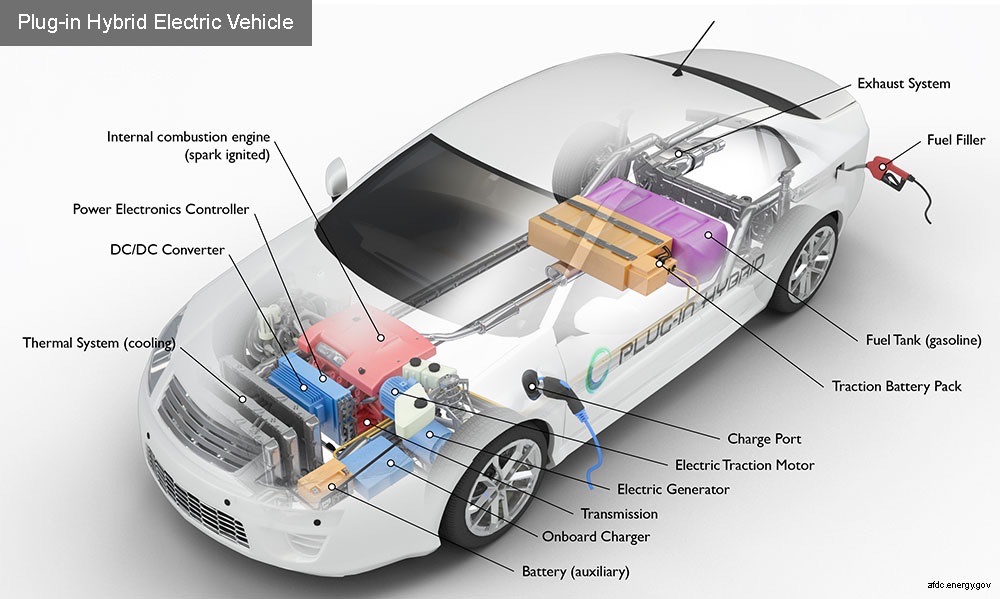
Plug-in hybrid electric vehicles (PHEVs) combine the benefits of both electric and traditional gasoline powertrains. They use batteries to power an electric motor and an internal combustion engine (ICE) to provide additional range and power. PHEVs can be charged using a wall outlet or charging equipment, and they can also generate electricity through the ICE and regenerative braking. Typically, the vehicle runs on electric power until the battery is nearly depleted, at which point it automatically switches to the ICE.
Key Components of a Plug-In Hybrid Electric Car
- Battery (Auxiliary):
- Provides electricity to start the car before the traction battery is engaged and powers vehicle accessories.
- Charge Port:
- Allows the vehicle to connect to an external power supply to charge the traction battery pack.
- DC/DC Converter:
- Converts higher-voltage DC power from the traction battery pack to the lower-voltage DC power needed to run vehicle accessories and recharge the auxiliary battery.
- Electric Generator:
- Generates electricity from the rotating wheels while braking, transferring that energy back to the traction battery pack. Some vehicles use motor generators that perform both drive and regeneration functions.
- Electric Traction Motor:
- Drives the vehicle’s wheels using power from the traction battery pack. Some vehicles use motor generators that perform both drive and regeneration functions.
- Exhaust System:
- Channels exhaust gases from the engine out through the tailpipe. A three-way catalyst reduces engine-out emissions within the exhaust system.
- Fuel Filler:
- A nozzle from a fuel dispenser attaches to the vehicle’s receptacle to fill the tank with gasoline.
- Fuel Tank (Gasoline):
- Stores gasoline on board the vehicle until needed by the engine.
- Internal Combustion Engine (Spark-Ignited):
- In this configuration, fuel is injected into either the intake manifold or the combustion chamber, where it is combined with air. The air/fuel mixture is ignited by a spark from a spark plug.
- Onboard Charger:
- Converts incoming AC electricity supplied via the charge port to DC power for charging the traction battery. It also communicates with the charging equipment and monitors battery characteristics such as voltage, current, temperature, and state of charge while charging the pack.
- Power Electronics Controller:
- Manages the flow of electrical energy delivered by the traction battery, controlling the speed of the electric traction motor and the torque it produces.
- Thermal System (Cooling):
- Maintains a proper operating temperature range for the engine, electric motor, power electronics, and other components.
- Traction Battery Pack:
- Stores electricity for use by the electric traction motor.
- Transmission:
- Transfers mechanical power from the engine and/or electric traction motor to drive the wheels.
PHEVs provide flexibility by allowing drivers to use electric power for shorter trips and gasoline for longer journeys, reducing fuel consumption and emissions while offering the convenience of traditional refueling options.
